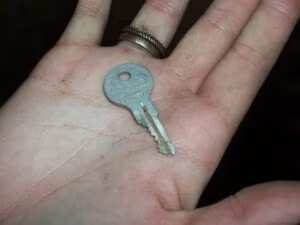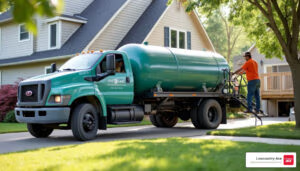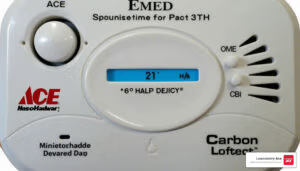Quick Guide to Sharpening Garden Tools:
– Step 1: Clean your tools to remove any dirt or rust.
– Step 2: Inspect for damage and identify sharp edges.
– Step 3: Choose the right sharpening tool: a mill file for larger tools, and a whetstone or diamond hone for finer blades.
– Step 4: Sharpen the tool, maintaining the original angle.
– Step 5: Clean and oil the tool to prevent rust.
Gardening is more than just a hobby; it’s a passion that requires time, effort, and the right set of tools. But even the best garden tools can lose their edge, literally and figuratively, if not properly maintained. Sharpening your garden tools is not only about keeping them effective but also about keeping you safe. Dull tools require more force to use, increasing the risk of accidents. Plus, a sharp tool makes gardening tasks easier and more enjoyable.
The helpful team at Lowcountry Ace understands the importance of maintaining your gardening arsenal. Whether you’re pruning delicate blooms with shears, slicing through tough soil with a trowel, or chopping thick branches with snips, having sharp tools can transform gardening from a chore into a delightful experience. And let’s not forget, proper tool maintenance extends the life of your investments, ensuring your beloved garden tools are ready and able for seasons to come.
Keeping your tools sharp, clean, and in good working order not only enhances your gardening efficiency but also protects your plants from damage and disease. Let’s dig into how to sharpen your gardening tools in a few simple steps, ensuring safety and maintaining the joy of gardening.
Identifying Tools That Need Sharpening
When spring rolls around, it’s time to get your garden back in shape. But before you start, you need to make sure your tools are ready for the job. Not sure which tools need sharpening? Here’s a quick guide to help you identify them.
Pruning Shears and Snips
These are your garden’s surgeons. They help you cut and shape your plants, keeping them healthy. If your pruning shears are dull, they can damage your plants instead of helping them. Look for signs of dullness, like if it’s hard to cut through stems or if the cuts are jagged.
Harvest Knives
A sharp harvest knife makes harvesting your fruits and veggies a breeze. A dull knife can crush or damage your produce. If you have to apply more force than usual, it’s time to sharpen your knife.
Hand Tools, Trowels, and Hoes
These are the workhorses of your garden. They dig, weed, and till the soil. If they’re dull, you’ll find yourself working harder and possibly damaging your plants or soil structure. Check the edges for bluntness or nicks.
How Do I Know If They Really Need Sharpening?
Here are a few simple tests:
- Visual Inspection: Look for visible signs of wear, like nicks, dents, or a shiny, polished edge.
- The Paper Test: Try cutting a piece of paper with the tool. If it cuts cleanly, it’s sharp. If it tears or can’t cut, it needs sharpening.
- The Performance Test: If you’re using more force than usual or the tool isn’t performing well, it probably needs sharpening.
Keeping your tools sharp is not just about making your gardening easier. It’s also about safety. Dull tools require more force, increasing the risk of accidents. Plus, clean cuts are better for your plants, reducing the risk of disease.
Now that you know which tools need sharpening, let’s move on to preparing your tools for sharpening. This next step is crucial for a successful sharpening session.
Preparing Your Tools for Sharpening
Before you start sharpening your garden tools, it’s important to prepare them properly. This will make the sharpening process easier and more effective. Here’s how to get your tools ready in a few simple steps:
Remove Debris
First things first, you need to get rid of any dirt, plant material, or other debris stuck to your tools. Use a stiff brush or a piece of cloth to clean them off. This step is important because debris can interfere with the sharpening process and may even cause your tools to rust.
Wash and Dry
After removing the loose debris, wash your tools with soapy water to ensure they are completely clean. A clean tool will give you a clear view of the blade’s condition and make it easier to sharpen accurately. After washing, dry your tools thoroughly with a towel to prevent rusting. Water is an enemy to metal!
Rust Removal
If your tools have developed rust, don’t worry, you can still save them. Use sandpaper or steel wool to scrub off the rust. Start with a coarser grit sandpaper to remove the bulk of the rust, then switch to a finer grit to smooth out the surface. For tough rust, soaking the tool in white vinegar overnight before scrubbing can work wonders.
Sandpaper and Steel Wool
Sandpaper and steel wool are your best friends when it comes to preparing your tools for sharpening. After removing rust, you can use these materials to polish the blade and remove any remaining imperfections. This step ensures that your sharpening efforts are not wasted on a damaged or uneven surface.
By following these preparation steps, you’re setting yourself up for a successful sharpening session. Clean, rust-free tools are much easier to sharpen, and the effort you put into preparation will pay off in the form of sharp, efficient garden tools. With your tools now ready, you can move on to the actual sharpening process with confidence.
Next, we’ll explore the specific techniques and tools needed to sharpen different types of garden tools, ensuring they’re in top condition for your gardening tasks. Whether you’re dealing with pruning shears or a sturdy spade, the right approach will make all the difference. Stay tuned for detailed insights into bringing your garden tools back to their best.
Sharpening Techniques for Different Tools
Sharpening your garden tools not only makes your gardening tasks easier but also prolongs the life of your tools. Let’s dive into how to sharpen different types of garden tools using the right techniques and tools.
Pruning Shears and Snips
Mill File & Diamond Hone: For pruning shears and snips, you’ll want to start with a mill file to remove any nicks and smooth out imperfections. Follow up with a diamond hone to refine the edge. Focus on the beveled edge only, maintaining the original angle.
Beveled Edge & Single-Bevel: Most pruning shears have a single-beveled edge, meaning you only need to sharpen one side. Keep the file or hone at the same angle as the bevel to ensure an evenly sharpened blade.
De-burring: After sharpening, a burr (a thin ridge of roughness) may form on the opposite side of the edge. Gently remove this burr by running your file or hone lightly across the flat side.
Harvest Knives and Straight-edge Hoes
File Direction & Diamond Hone: Use a diamond hone for your harvest knives, moving in one direction along the blade’s edge to maintain consistency. A flat file works well for straight-edge hoes, using even strokes to maintain the edge.
Angle Consistency: The key to a sharp edge is maintaining a consistent angle. Typically, a 20-degree angle works well for knives, while hoes might require a slightly more obtuse angle.
Fine, Coarse Hone: Start with a coarse side of the hone to remove any significant dullness or damage, then finish with the fine side to polish the edge.
Trowels and Spade Shovels
Flat File: Use a flat file for trowels and spade shovels. Secure the tool and file along the edge, maintaining even pressure to ensure a uniform sharpness.
Edge Cleaning & Safety Precautions: After filing, clean any metal filings from the edge. Always wear gloves and protective eyewear when sharpening to prevent injuries.
Broadforks and Other Non-Sharp Tools
Maintenance & Adjustment: While not all garden tools require a sharp edge, tools like broadforks still need regular maintenance. Check for any loose screws or parts and tighten them. Clean the tool after each use to prevent rust.
Cleaning & Oil Treatment: Use a wire brush to remove dirt and rust. After cleaning, apply a light coat of oil, such as Camellia oil, to protect the metal from rust and keep moving parts working smoothly.
By following these sharpening techniques, you can ensure your garden tools are always ready for the job. The helpful team at Lowcountry Ace is always available to provide advice and supplies for your garden tool maintenance needs. Keep your tools sharp, and they’ll make your gardening efforts more productive and enjoyable.
Aftercare and Maintenance
After you’ve sharpened your garden tools, it’s crucial to take steps to maintain their condition. This ensures they stay sharp and functional for as long as possible. Here’s how to do it:
Lubrication
Once your tools are sharp, applying a light coat of oil is essential. This prevents rust and keeps the tools moving smoothly. A little goes a long way. Use a clean rag or towel to apply the oil evenly across all metal surfaces.
Oil Options
There are several types of oils you can use for your garden tools. Tung, linseed, and even walnut oil are excellent choices. Each of these oils dries quickly and provides a protective layer against moisture and rust. Linseed oil is particularly recommended for wooden handles, as it penetrates deeply and preserves the wood.
Storing Tools
Proper storage is key to keeping your tools in good shape. Ensure they are stored in a dry and clean area where they are easily accessible. Tools left on the ground can get damp or damaged, so consider hanging them up.
Mineral Oil
For storing tools over longer periods, like during the off-season, applying mineral oil is a great option. It’s heavier than the oils used for regular maintenance and provides a thicker barrier against rust.
Magnetic Strips
A clever storage solution is to use magnetic knife strips. Install these strips on walls or in your storage shed. They can hold a variety of tools and keep them off the ground, reducing clutter and minimizing damage risk. This method makes it easy to grab the tools you need without digging through a pile or drawer.
By following these aftercare and maintenance tips, you’ll extend the life of your garden tools significantly. Regular lubrication and proper storage are simple yet effective practices that keep your tools in top condition. And remember, the helpful team at Lowcountry Ace is always ready to assist with advice and the right products for your garden tool care. Keep your tools well-maintained, and they’ll serve you well in creating a beautiful garden.
Frequently Asked Questions about Sharpening Garden Tools
When it comes to maintaining your garden tools, sharpening them is a key practice for ensuring they work efficiently and safely. However, many gardeners have questions about the best practices for sharpening their tools. Below, we address some of the most common queries with simple, straightforward advice.
Can I use a kitchen knife sharpener on garden tools?
While you might be tempted to use a kitchen knife sharpener for convenience, it’s not the ideal solution for garden tools. Kitchen knife sharpeners are designed for smaller, thinner blades and may not be effective or safe for the thicker, often more robust blades of garden tools. Instead, using a mill file, whetstone, or diamond hone is recommended depending on the tool. This ensures a more appropriate sharpening technique that matches the specific needs of each garden tool.
How often should I sharpen my garden tools?
The frequency of sharpening your garden tools can vary based on how often you use them and what you’re using them for. As a general rule, sharpening at the start of the gardening season will prepare your tools for the work ahead. However, if you notice your tools are becoming dull mid-season, giving them a quick sharpen can improve their performance. For heavily used tools like pruning shears, a mid-season touch-up might be necessary to keep them in optimal condition.
What is the best way to test the sharpness of my tools?
There are a few simple methods to test the sharpness of your garden tools. One straightforward way is to visually inspect the blade. Look for any nicks or dullness along the edge. Another method is the paper test: try slicing through a piece of paper with the tool. A sharp blade should cut through the paper cleanly and easily. For tools like pruning shears, you might also test them on a plant in your garden. A clean, easy cut indicates a sharp tool, while a jagged or difficult cut suggests it’s time for sharpening.
Keeping your garden tools sharp is not just about making your gardening tasks easier; it’s also about safety. A sharp tool is more predictable and requires less force, reducing the risk of accidents. If you’re ever unsure about how to properly sharpen your tools, the helpful team at Lowcountry Ace is ready to assist. With the right knowledge and tools, you can ensure your garden tools are always in the best shape for the job.
Conclusion
Taking the time to sharpen your garden tools is more than just a chore; it’s an investment in your garden’s future and your own safety. By following the simple steps we’ve outlined, you’re not only ensuring that your tools last longer, but you’re also enhancing your overall gardening experience. Sharp tools mean cleaner cuts, less effort, and more enjoyable gardening.
At Lowcountry Ace, we understand the importance of keeping your garden tools in top condition. It’s not just about the immediate results; it’s about fostering a relationship with your garden that is both fruitful and fulfilling. We’ve seen how well-maintained tools can transform gardening from a task into a passion. And when your tools work with you, rather than against you, the joy of gardening only grows.
A sharp tool is a safe tool. Dull blades can make gardening a struggle and even lead to accidents. By keeping your tools sharp, you’re taking an important step towards safer gardening practices. And if you ever have questions or need assistance, the helpful team at Lowcountry Ace is here to help. We’re not just a store; we’re a community of gardening enthusiasts committed to helping you achieve your gardening goals.
So, whether you’re pruning delicate flowers or tackling tough soil, the state of your tools can make all the difference. Visit us at Lowcountry Ace for all your gardening needs, from high-quality tools to expert advice. Together, we can ensure that your garden tools—and your garden—thrive for seasons to come.
Happy gardening from all of us at Lowcountry Ace!
Lowcountry Ace Hardware: Your one-stop shop for home improvement. We offer quality products from trusted brands and expert advice from our experienced staff. Located on James Island, visit us for tools, hardware, fishing gear, power tools, building materials, grills & smokers, electrical and plumbing supplies, and more.







